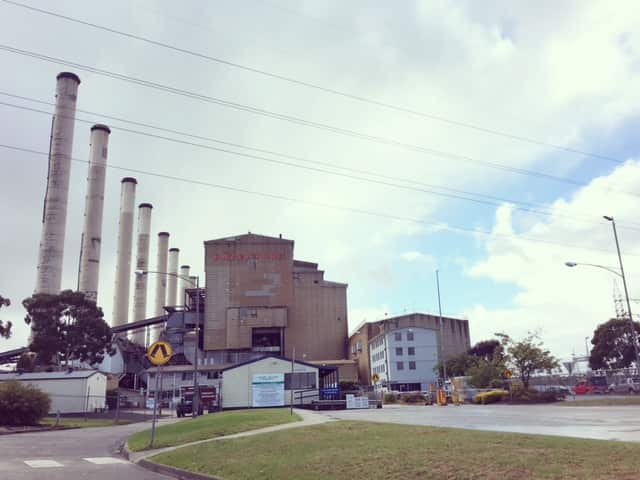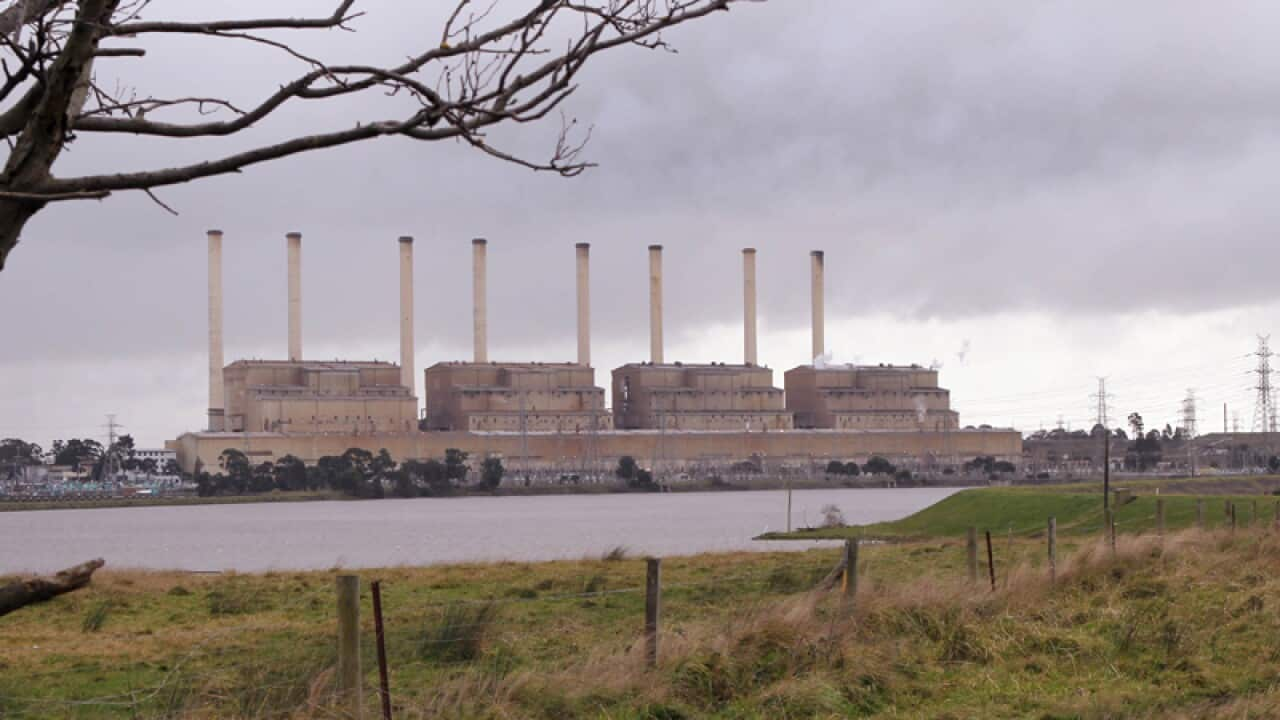With the closure of the Hazelwood power station Victoria’s Latrobe Valley, 750 staff and contractors face an uncertain future.
Despite the social and economic challenges the closure brings, the region is looking ahead.
Moe, Morwell and Traralgon are some of the towns affected.
In Morwell, slicing cold meats is a far cry from Tony Marino's job as a fitter at the power station.
On his days off he helps out at the family's delicatessen, where his parents settled after migrating from Italy in 1955.
They've had the Church Street deli for decades, and Mr Marino told SBS News the business has had its ups and downs since the Kennett government privatised the state’s electricity commission in the 1990s.
“It used to be a thriving hub, this street alone. There used to be butchers, bakers, everything, and then the last privatisation of SEC [State Electricity Commission] business has backed off a bit. But we still manage.”
Mr Marino has worked at the Hazelwood power station since he was 17-years-old. He followed in his late father's footsteps, even working with him for a period.
Twenty-eight-years-later, he's facing an uncertain future.
“It’s a bit of a shock. I could have been there 'til I was 65 and retired, and I would have been comfortable.”
Hazelwood generates up to 25 per cent of Victoria’s power.
After 52 years, the emissions-intensive brown coal plant is officially shutting down.
Its operators, French company, Engie, announced the closure last November, at the time saying the plant was no longer viable.
While hundreds of staff - promised work until 2025 - will lose their jobs, Mr Marino is one of the lucky few who will stay on for decommissioning.
“I'm a bit worried about my kids actually, I'll probably push them to go to school as far as they can, then maybe off to Melbourne I think.”
Education in the Valley
Education is key to the Latrobe Valley's future, according to the region's multicultural centre.
Team leader Cate Chaiyot told SBS News education is a good path to employment, especially at a time when people are feeling anxious about future prospects.
“We have some really great secondary schools around here, so we really encourage young people to stay in school and pursue education and educational pathways, and support them in finding employment.
Ms Chayiot is hopeful some new faces in the community will help bring new ideas to the region.
“I’ve been really excited to see waves of migrants and people from multicultural backgrounds moving down here,” she said.
see waves of migrants and people from multicultural backgrounds moving down here,” she said.

Hazelwood power station. Source: SBS
“Historically it has always been a very European area, European migrants came down here to settle work in coal mines.
"I think it’s really exciting to see new faces starting to build their lives here, send their kids to the schools, find jobs and really be part of the community.”
Yumna Ahmet's father moved the family over from Pakistan for a job at Hazelwood in 2009.
While the engineer moves interstate for work, 23-year-old Ms Ahmet is staying with her mother and younger siblings while they finish school.
“There’s a lot of optimism for what’s coming now, with the tech precinct or the forensic lab.”
She formed a group called ‘United Muslim Sisters of the Latrobe Valley’ in 2013, to help other new arrivals find their feet.
“We decided to create that as an opportunity to get together and start a conversation and the local community has been great. So it was our way of getting out there.”
She is a social worker and is continuing her studies at Federation University. She hopes migrant communities will stay and find jobs in the health sector.
The age of manufacturing
For a region centred on manufacturing, there’s still a lot of uncertainty around the direction forward.
Latrobe Valley Mayor Kellie O’Callaghan said one of the greatest fears for locals is that there isn’t a solid, structured plan.
“There wasn’t really a clear understanding of it being that imminent. I think for a lot of us, we anticipated it, and we’d been talking to government, but we really couldn’t get a solid commitment for community that would mean jobs.”
They want a greater share of agri-business, or rail projects to capitalise on affected workers’ skills.
“We know that this won’t be the only station that will close, so we know that we need to look at what that's going to mean for this community and transitions into the future.”
Unions have organised worker transfer schemes and are training members for any trade options.
AMWU Secretary Steve Dodds says coal has some kind of future in the Latrobe Valley.
“It may not be in power generation, it may be something else, like fertiliser or a whole range of bits and pieces.”
“Hazelwood is basically worn out, that’s why it’s shutting down.”
“The only positive thing, I think at the moment, is Australian Paper’s proposal for bio-manufacturing. If that comes off, there’ll be plenty of jobs for everybody.”
The union says the job losses at the power station will see tens of millions of dollars in earnings drained from the local economy.
The council fears the losses will impact 2000 jobs across the area, affecting small businesses and general confidence.
Diversifying to fight unemployment
Unemployment is already a big problem in the Latrobe Valley. In Morwell, it’s as high as 12.2 per cent.
The Victorian government has promised $266 million, and the federal government $43 million, to assist the region's transition and help prop up other sectors, such as sporting and health.
Diversifying will be key to the region’s prosperity.
For Traralgon graphic designer John Calabro, it’s not only a necessary advancement, but an opportunity too.
“There's a lot of eyes on us, there's a lot of investment coming this way, plenty of us have been saying for a long time, there's a lot of opportunity here, and now's our chance to really step up and prove that.”
He was self-employed in 2010, now his business employs nine people.
Like most of his fellow residents, Mr Calabro has encouraged people to move to the area, and help build further industries in the community. He's started a local newspaper, 'Gippslandia', to celebrate the Gippsland region's diversity.
Workers will leave Hazelwood for the last time over coming days, with some remaining for decommissioning and rehabilitation until 2018.
Share



